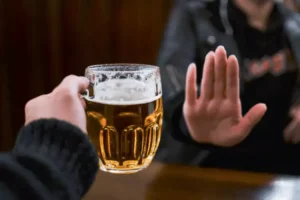
However, we found no significant differences in the cholinergic contribution to dopamine release between multiple abstinence and control males in Cohort 3 but we did find a trend toward reduced cholinergic driven dopamine release in the putamen of alcohol-consuming subjects. Similarly, in a limited set of putamen slices from the female cohort, we observed a potential reduction in cholinergic driven dopamine release in alcohol monkeys relative to controls (Fig. S1). Once isolated from cholinergic influence, dopamine terminals from the multiple abstinence male subjects in control and alcohol treatment groups responded similarly to varying frequency stimulation. Our findings with blockade of β2-containing nAChRs resemble previous findings in rodent striatum both with respect to antagonist inhibition and decreased inhibition at higher/phasic stimulation frequencies. Thus, the cholinergic contribution to dopamine release is conserved in primate striatum.
Developmental changes in the DA system

The paper “Synchrony between midbrain gene transcription and dopamine terminal regulation is modulated by chronic alcohol drinking” was published in Nature Communications in February 2025. It’s important to note that while dopamine alcohol and dopamine plays a significant role in alcohol addiction, it’s not the only factor. Other neurotransmitter systems, such as GABA and glutamate, also play crucial roles. In fact, the interaction between GABA and dopamine is an area of ongoing research in addiction science.
2.5. Human genetic evidence: alcohol dependence and dopamine

For once the brain senses a certain activity giving https://ecosoberhouse.com/oxford-house/ it pleasure; it will rewire the brain chemistry in a way which makes the person want to have more of that activity. For the determination of dopamine transient uptake kinetics, the modeling module in DEMON was used as previously described 30. To examine D2/3 dopamine autoreceptor function, the D2/3 dopamine receptor agonist, quinpirole (30 nM), was bath applied for 30 min and was followed by application of the D2-like dopamine receptor antagonist sulpiride (2 µM) for 15 min. To examine differences between tonic and phasic release, we applied stimuli at varying frequencies before and after the application of the β2 subunit-containing nAChR antagonist, dihydro-β-erythroidine hydrobromide (DHβE; 1 µM). DHβE was applied to slices to isolate dopamine axons from the influence of nAChRs.
- Dopamine levels fall, and the euphoric buzz goes with it, but your brain is looking to regain the feeling caused by the increased level of dopamine.
- It’s not about saying one gender is more vulnerable than the other, but about recognizing that everyone’s journey with addiction is unique.
- Some addictive substances affect dopamine directly, whereas alcohol and other drugs have an indirect effect.
- As the brain becomes accustomed to alcohol-induced dopamine release, it may struggle to produce feelings of pleasure and reward without alcohol.
- Prenatal alcohol exposure can also have a profound impact on brain development and lead to irremediable changes of fetal alcohol syndrome.
How Alcohol Tricks Your Brain

Another explanation is that while acute ethanol may increase firing rate in some VTA neurons, the amount of DA that is released with each stimulated pulse is actually reduced by acute ethanol. However, in an area like the nucleus accumbens where DA is cleared by the dopamine transporter (DAT), the clearance rate is attenuated by acute ethanol, ultimately producing increased DA levels. In contrast, in the PFC, where DA is cleared by the norepinephrine transporter and the enzyme COMT, acute ethanol may influence DA levels differently due to distinct ways in which DA is cleared from the synapse. Alcohol is metabolized to acetaldehyde, via the action of alcohol dehydrogenase (ADH), CYP2E1 and catalase.
- In conclusion, understanding how alcohol affects dopamine levels is key to grasping the bigger picture of addiction.
- Of note, salsolinol has been shown to support self-administration when delivered directly into the posterior VTA (Rodd et al., 2008).
- When you first start drinking alcohol, the chemicals increase dopamine production.
Disorders
While alcohol consumption still triggers dopamine release, chronic use can lead to an overall decrease in baseline dopamine levels and function when amphetamine addiction treatment alcohol is not present. This decrease can contribute to the negative emotional states often experienced during alcohol withdrawal, including depression, anxiety, and irritability. It can enhance the sensitivity of certain dopamine receptors, particularly the D2 receptors, which can amplify the effects of the increased dopamine release. This dual action – increasing dopamine release and enhancing receptor sensitivity – contributes to alcohol’s potent rewarding effects. Dopamine, often referred to as the “feel-good” neurotransmitter, plays a vital role in our brain’s functioning.
